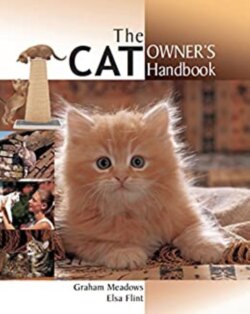Читать книгу The Cat Owners Handbook - Graham Meadows - Страница 18
На сайте Литреса книга снята с продажи.
Cats and people
ОглавлениеIn modern society pet animals are one of the many factors that make up what we call ‘quality of life’.
During the last 20 years, numerous studies have confirmed the psychological and medical benefits of pet ownership. These benefits have also become a basis for programmes based on animal-assisted activities (AAA) and animal-assisted therapy (AAT), also referred to as ‘pet-facilitated therapy’ and ‘animal-facilitated therapy’. In these programmes, interactions with animals are used to assist humans with physical or psychological problems.
Animal-assisted activities are informal ‘meet and greet’ programmes in which any progress on the part of the human recipient(s) is not measured.
Examples are taking pets to visit the elderly residents of nursing homes and hospitals, and the use of pets to help relieve loneliness and isolation in specific groups of humans such as abused children, prisoners, and persons in various forms of therapy.
Animal-assisted therapy is based on a formal programme that sets out to achieve a specific target, and is documented by a professional in the field of health or human services. This person may be a physician, occupational therapist, physical therapist, certified therapeutic recreation specialist, teacher, nurse, social worker, speech therapist or mental-health professional. The animal may be handled by the professional, or by a volunteer under the direction of a professional. The aim of the programme may be improvement in social skills, range of motion, verbal skills or attention span, for example. Each session is documented in the person’s record with the progress and activity noted.
For example, an occupational therapist may use the assistance of a cat and its handler in work to increase a person’s range of motion in the arm. By making the effort to stroke or hold the cat that person improves his or her mobility. The progress made during each session is documented by the occupational therapist.
In industrialized societies, increasing affluence, a falling birth rate and looser family ties have resulted in pets playing an even more important psychological role. More couples are choosing not to have any children, or to have them later in life after the female partner has established a working career, and for many of these people a pet becomes an important member of the family. But whatever the composition of your human family, owning a cat is likely to provide you with some important benefits.
